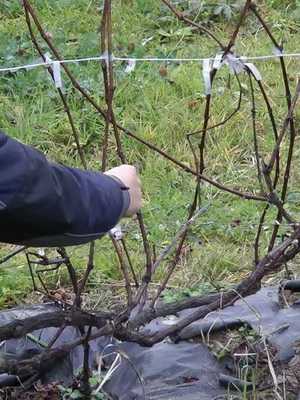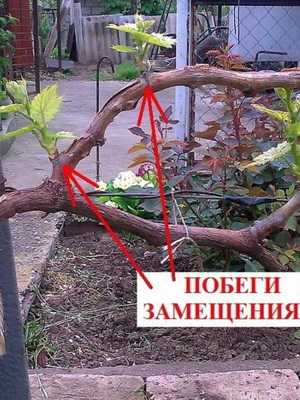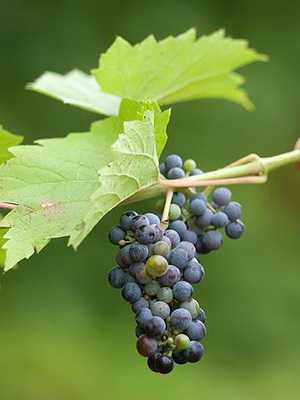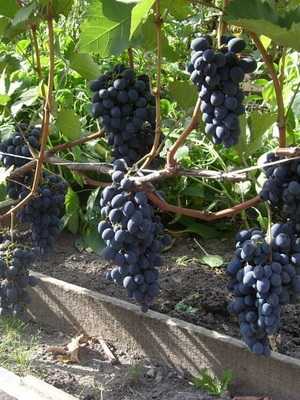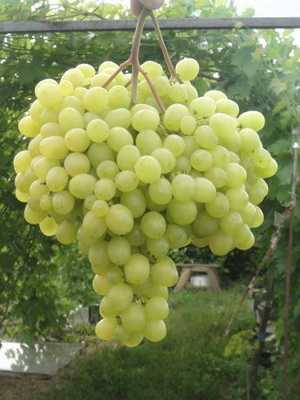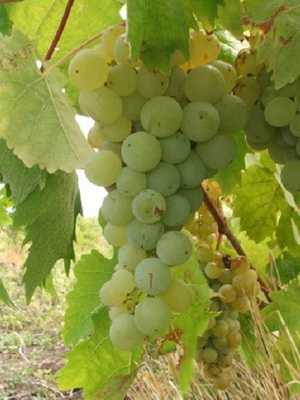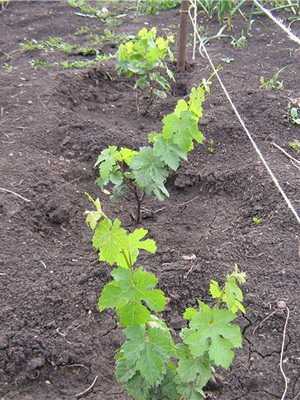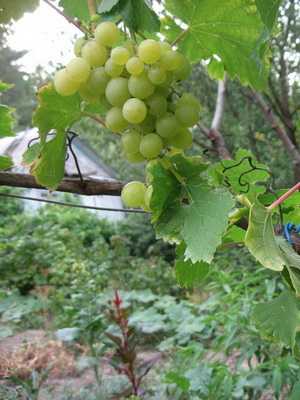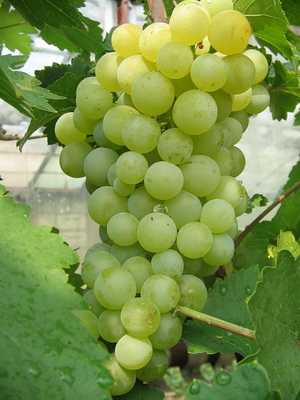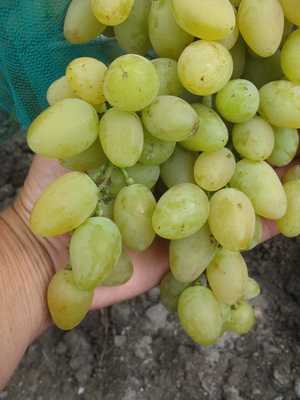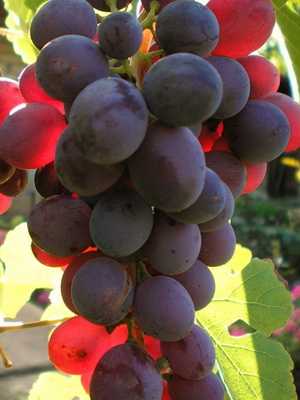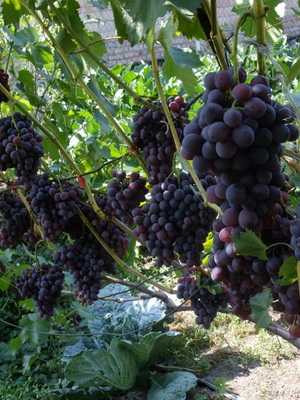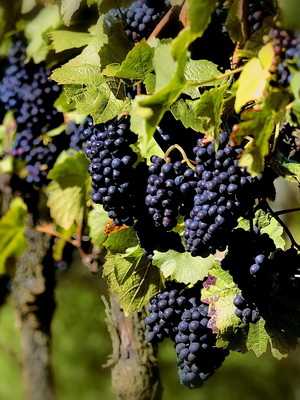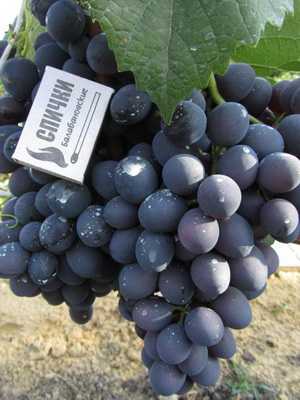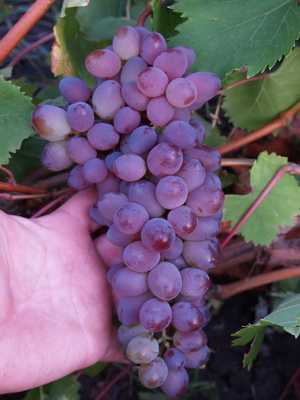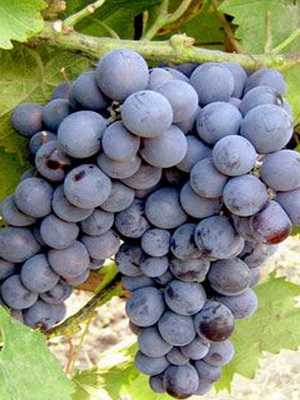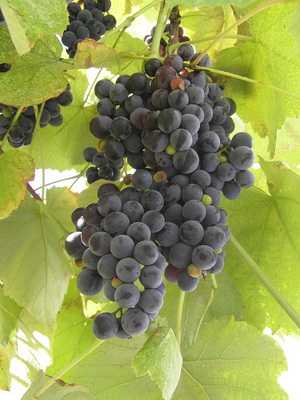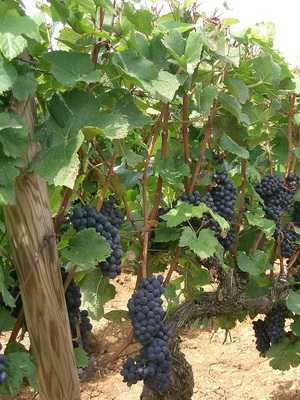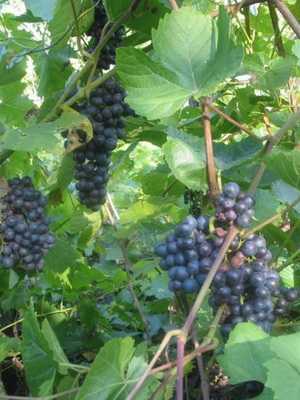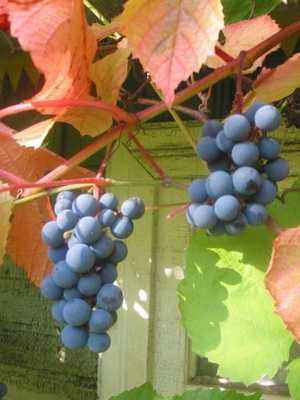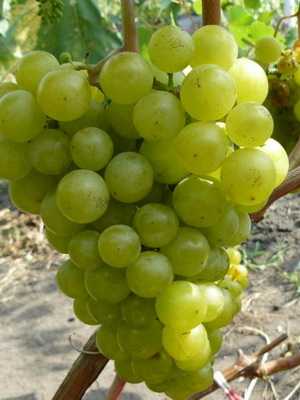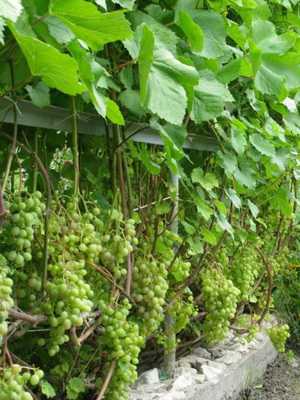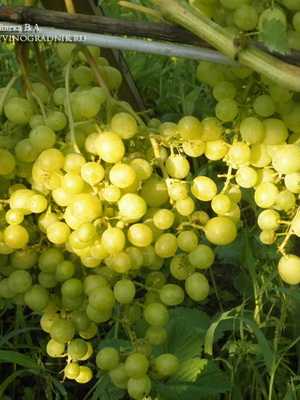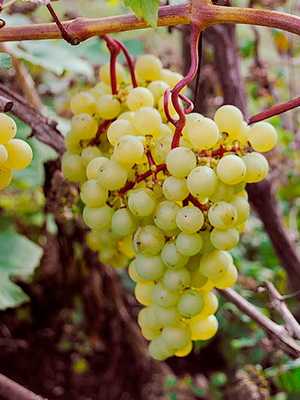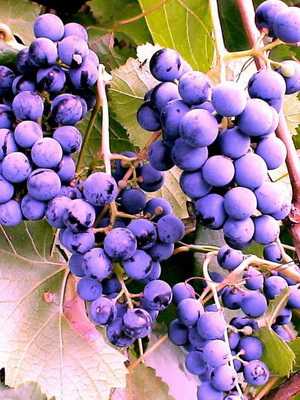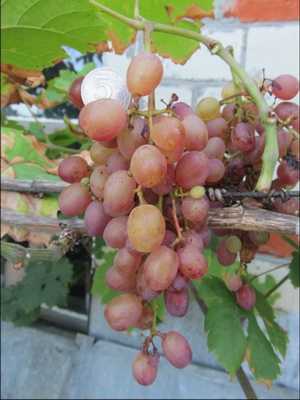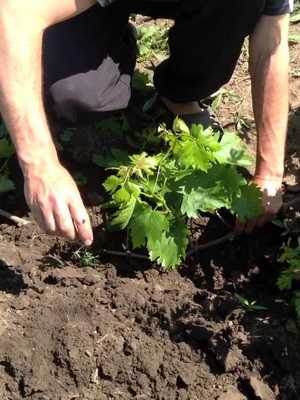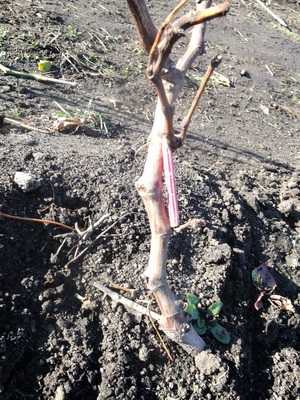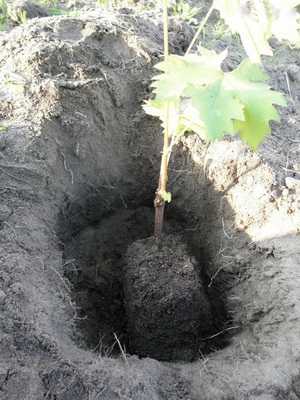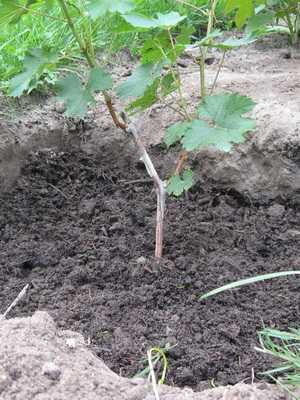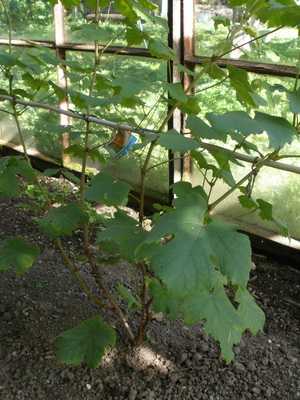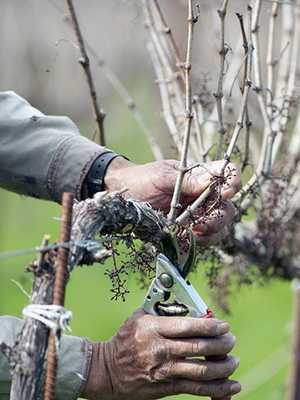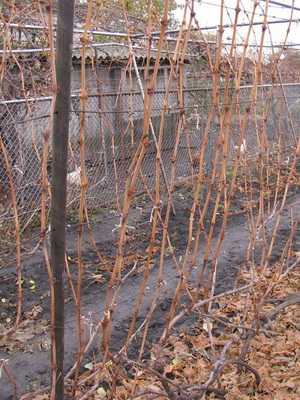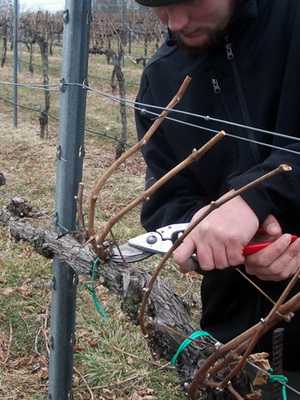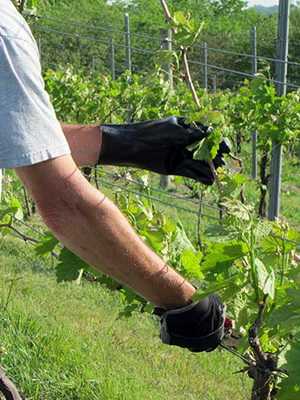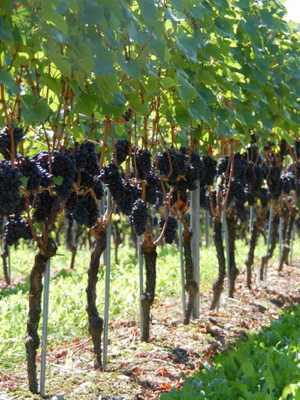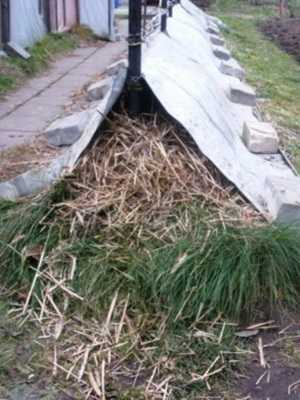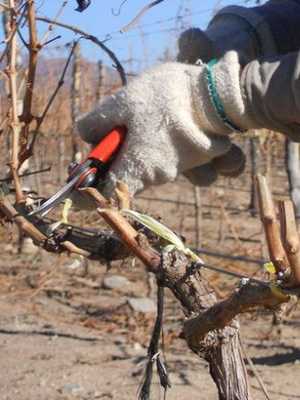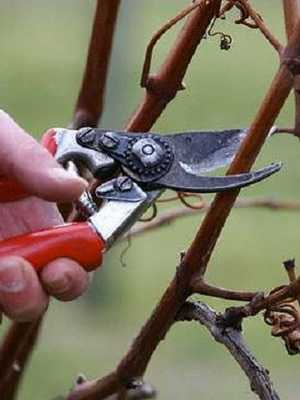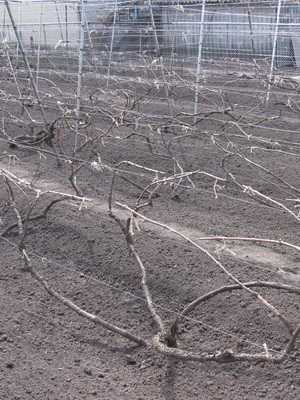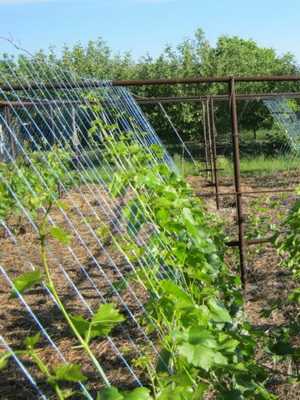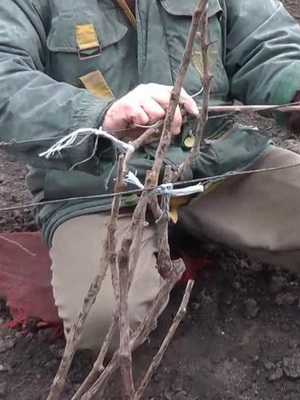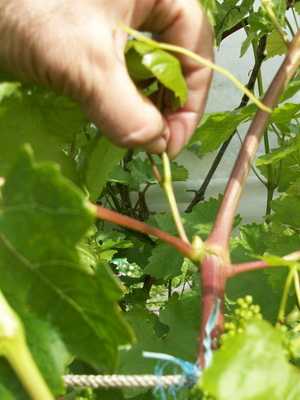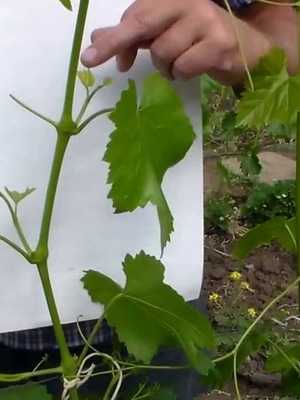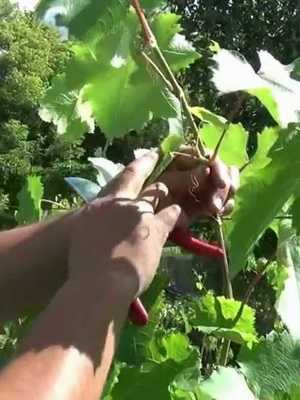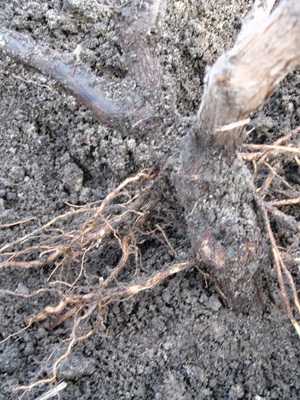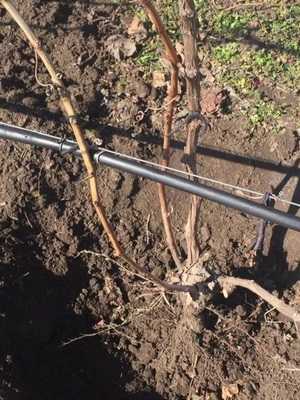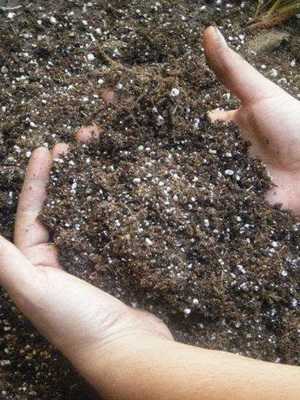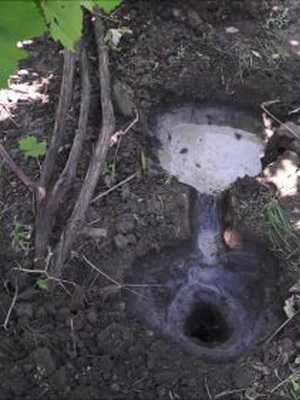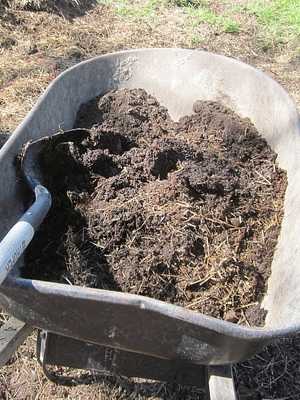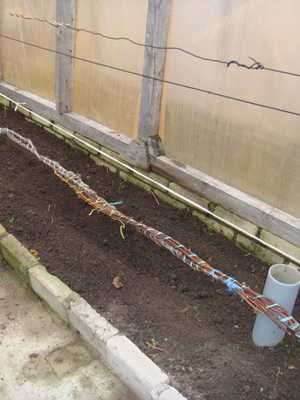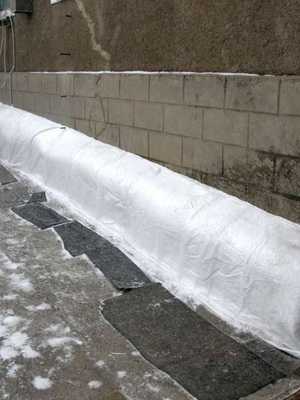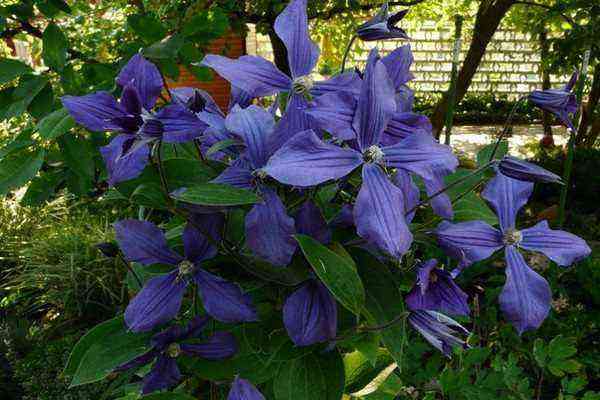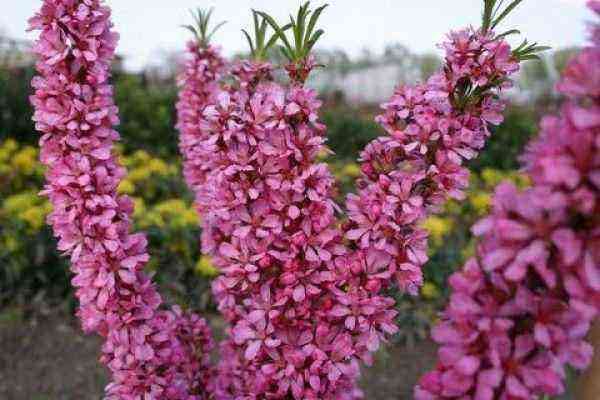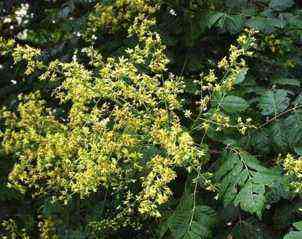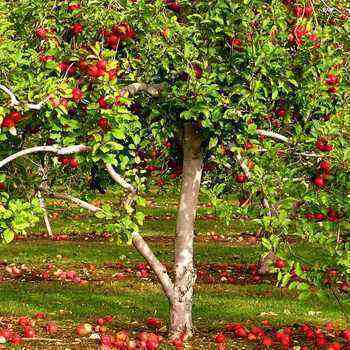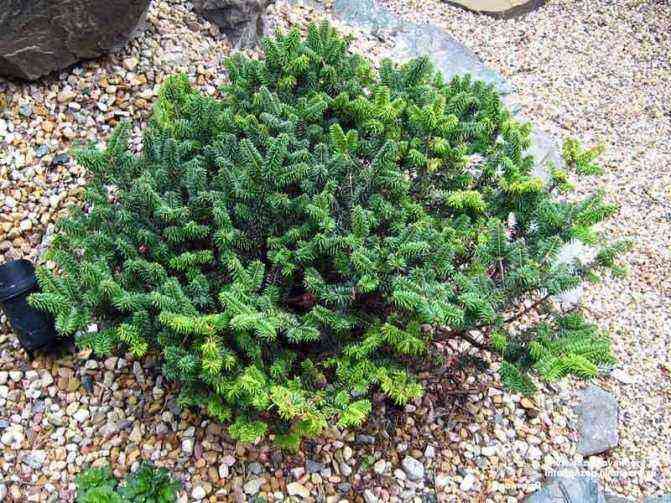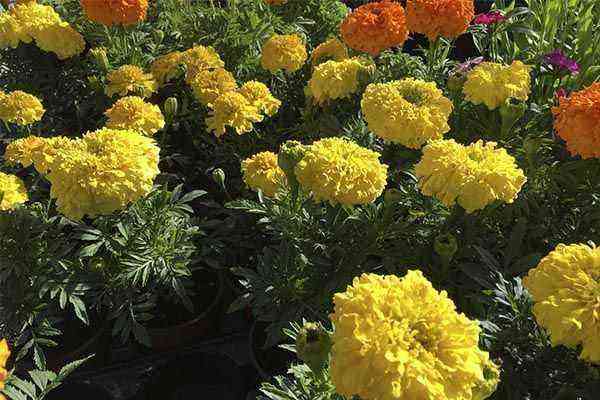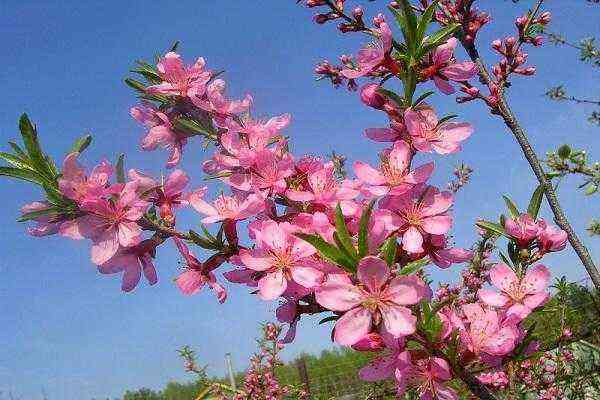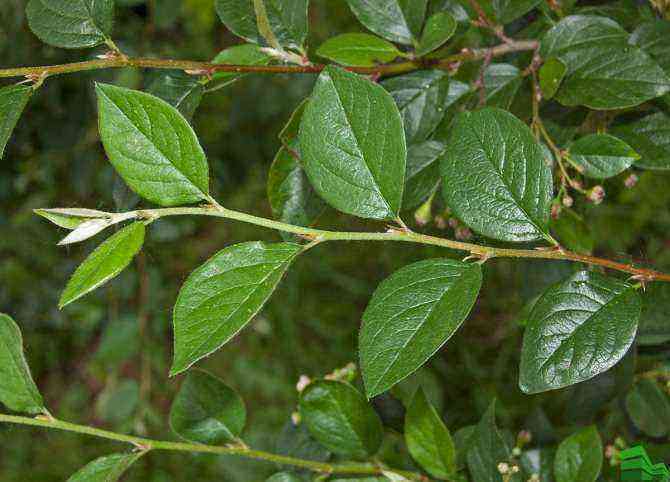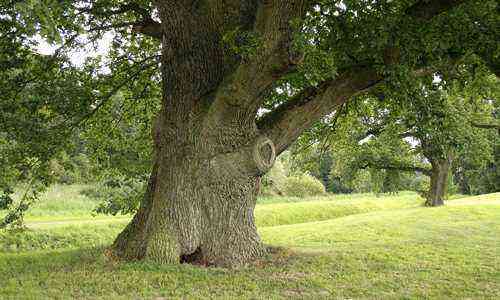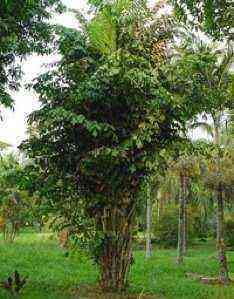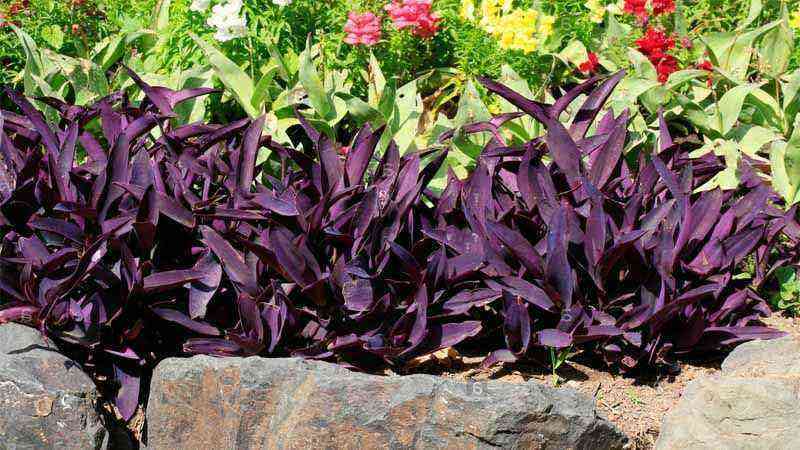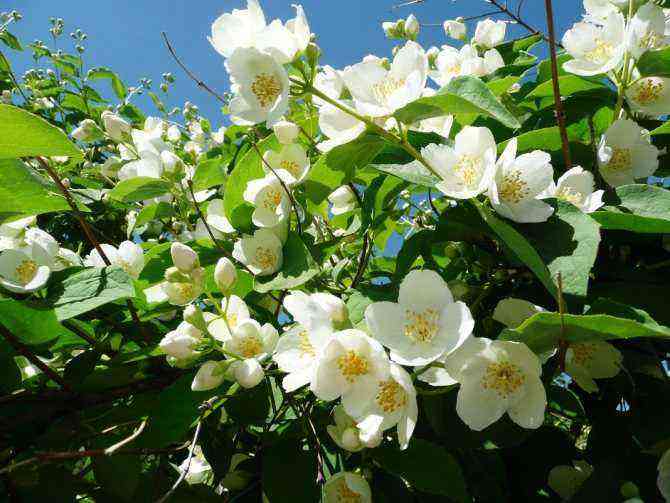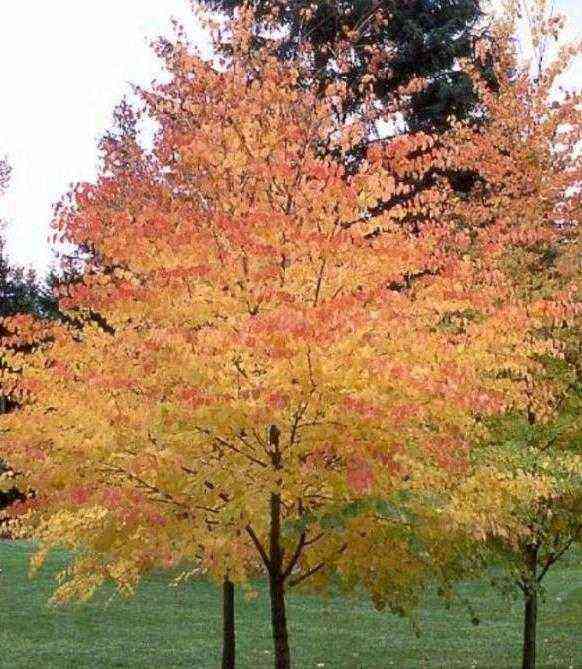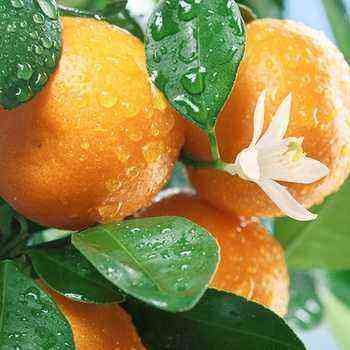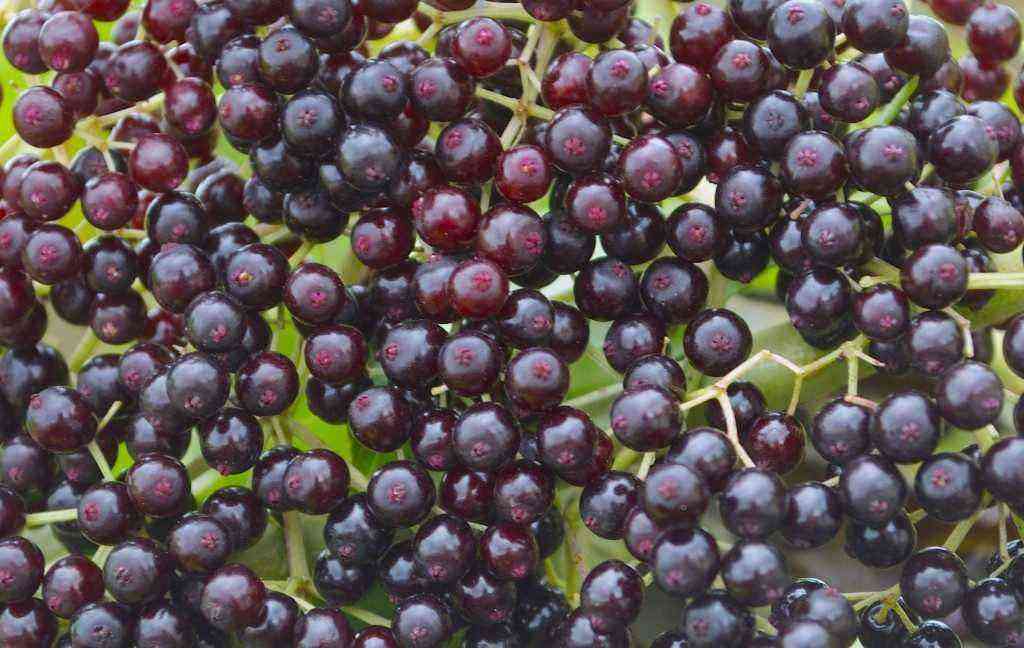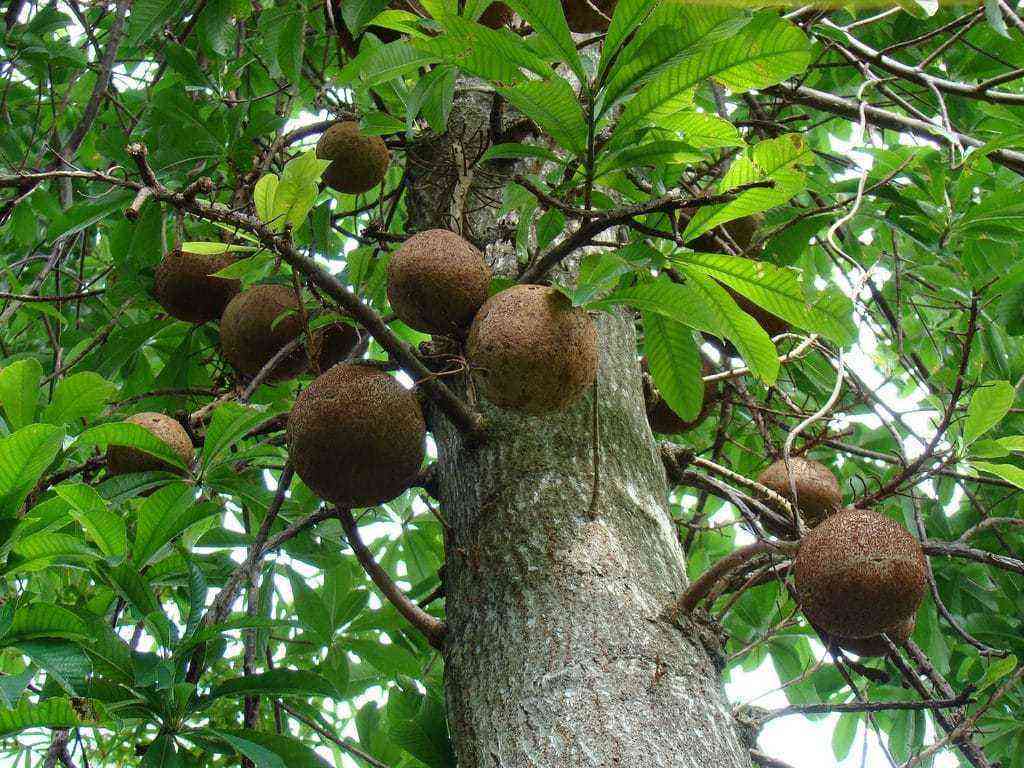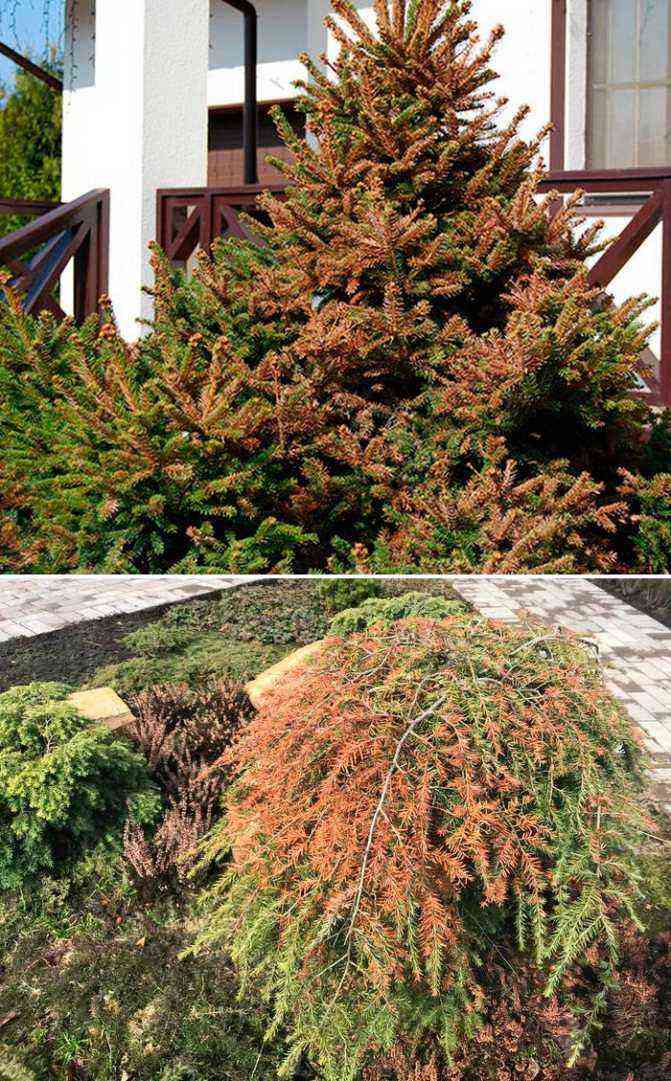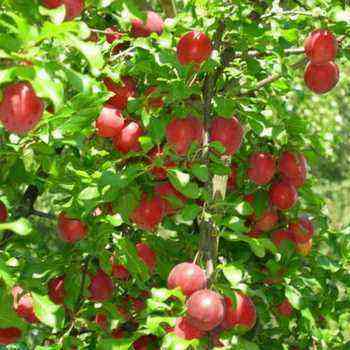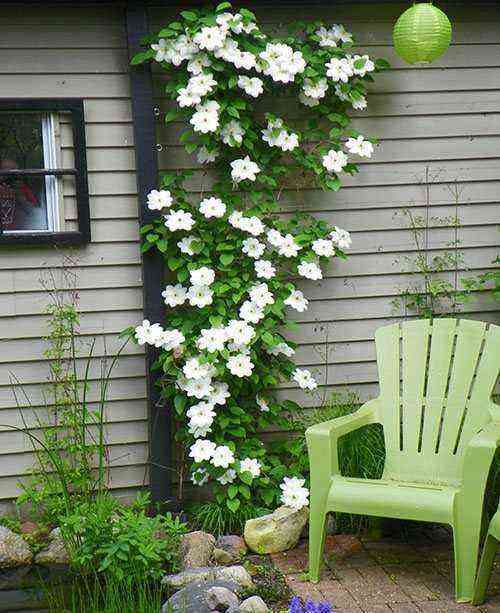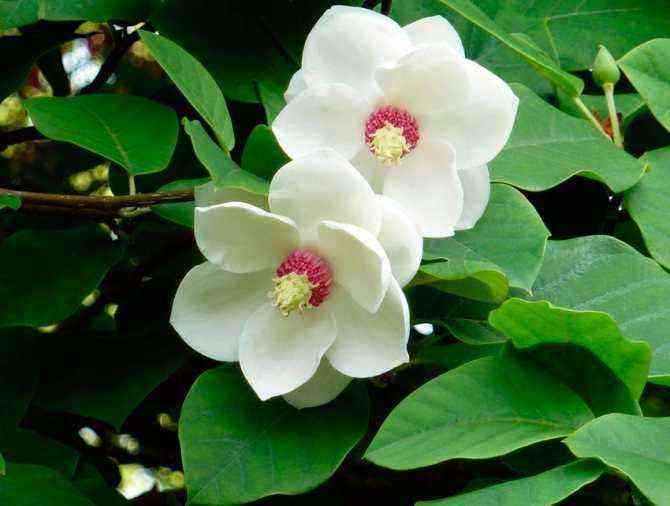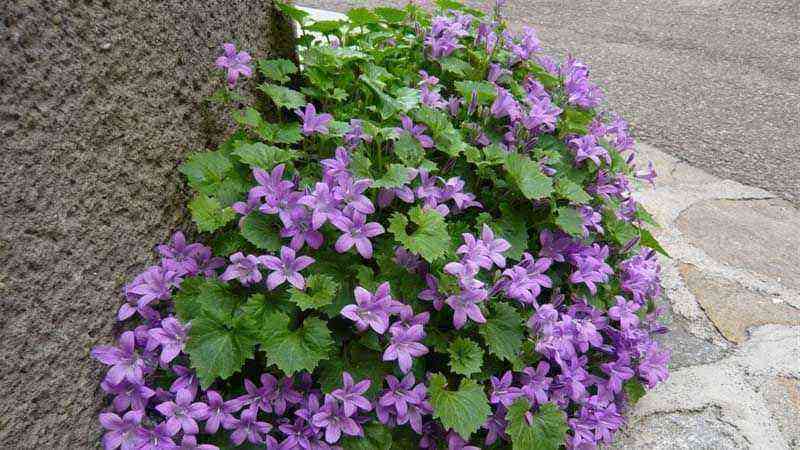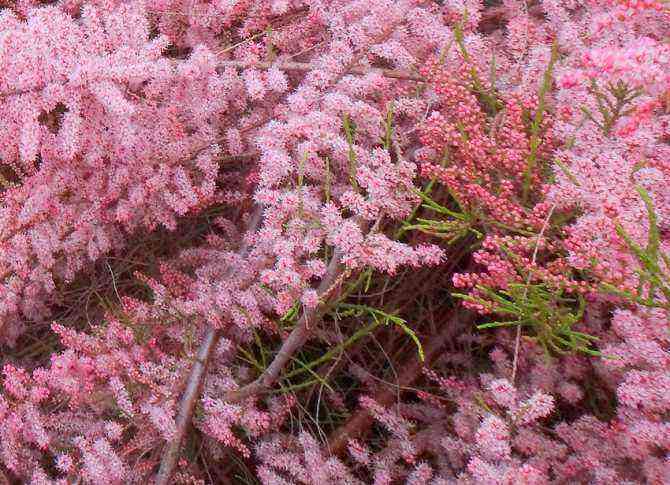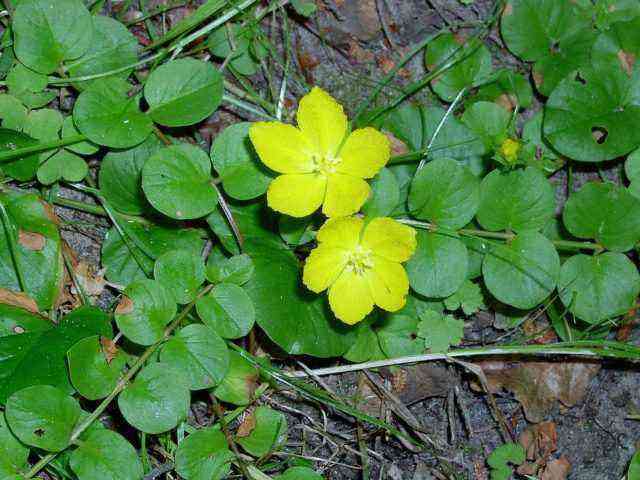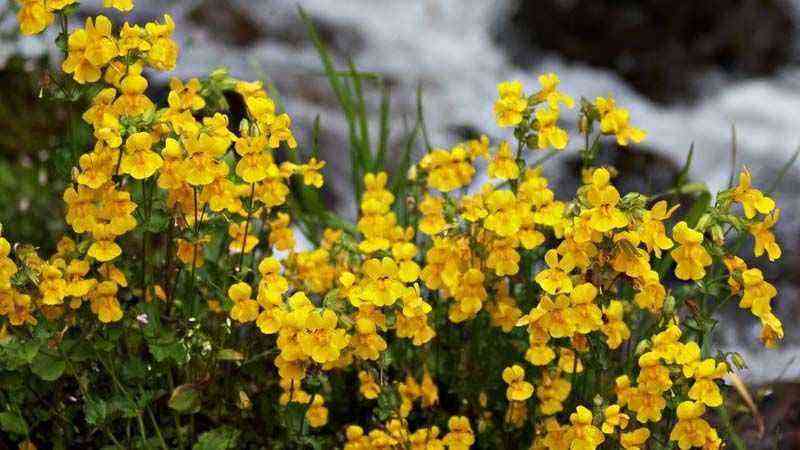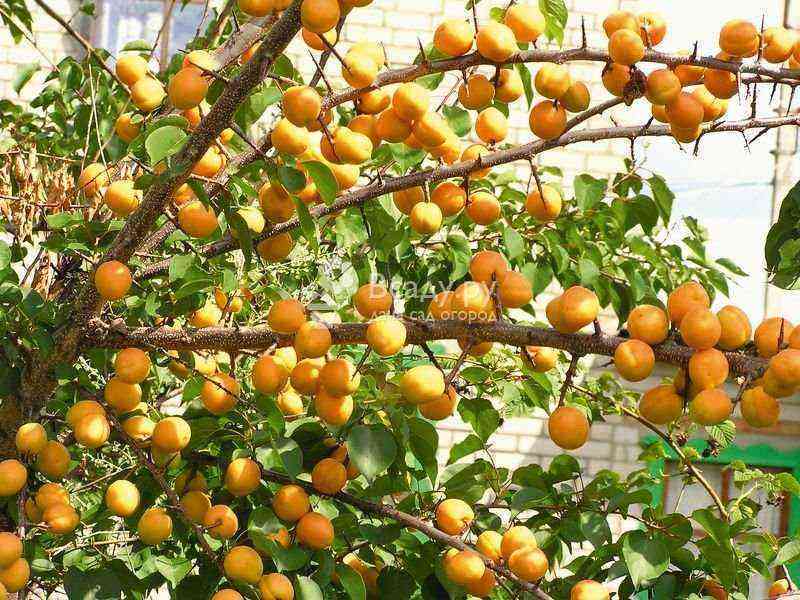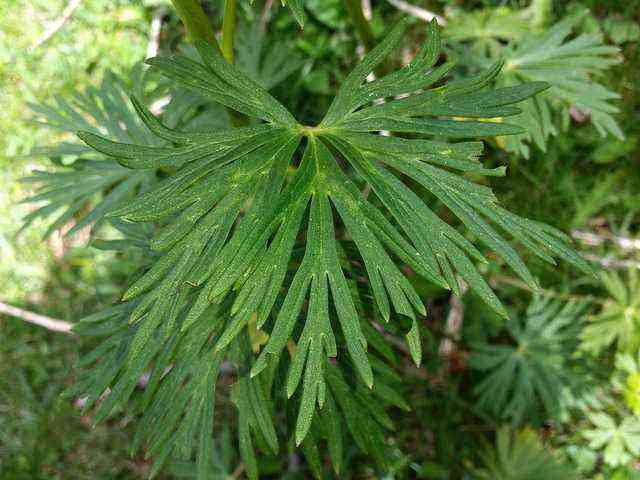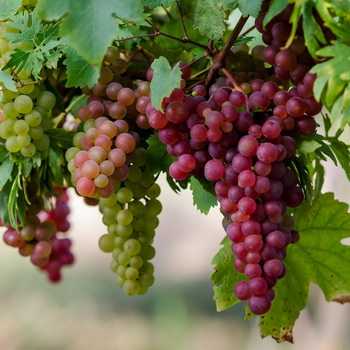
The development of amateur viticulture in recent years in Russia has gained a large scale. The former view that grapes are an exclusively southern crop is gradually dissipating. Previously, most of the failures arose due to the fact that amateur gardeners acquired random planting material, most often bringing in one or another grape variety with delicious berries from the south. They did not think about whether it will ripen in our conditions, whether it needs a pollinator variety. The plots for planting a vineyard or a place inside the garden were not always selected correctly. The lack of grape care skills also affected.
The main favorable factors that allow growing grapes both in the country and on an industrial plantation include the following:
1. Sufficient heat resources (duration of the frost-free period is 150-155 days).
2. Significant snow cover, which is formed at the end of the second decade of November. This is a great advantage of the average Russian region even over such zones of industrial grape culture as the Rostov Region, Krasnodar and Stavropol Territories, where winters are characterized by unstable snow cover.
3. General significant dryness of the air, preventing the development of mildew and gray rot. Outbreaks of these diseases are possible only in some of the wettest years.
4. Absence of phylloxera.
On this page for your attention. A photo and description of grape varieties are offered, as well as recommendations for growing this culture.
Biological features of grapes: the structure of the bush
The formed bush of grapes consists of a head, sleeves and annual shoots.
Head – perennial overgrown base of the bush.
Sleeves – perennial branches extending from the head of a bush, the length of which is more than 35 cm.
Fruiting vine (fruit arrow, whip, fruit arch) – long-cut annual shoots, which are the main fruiting part of the bush. It has buds from which green shoots develop. Green shoots bear leaves, tendrils and inflorescences. Shoots bearing inflorescences are called fruitful, without inflorescences – sterile. Green shoots also develop from dormant buds on the head, on the sleeves and on the underground trunk of the bush. Shoots that have grown from dormant buds of perennial wood are called tops, and from the head of a bush and an underground trunk – coppice. Tops and shoots in the year of formation are mostly sterile. They strongly thicken the bush and must be removed during green operations.
Replacement vine (stand, twig) – short-cut annual shoots with 3 – 5 buds, used for growing fruit-bearing vines of the next year and for replacing old damaged sleeves. The bush has several links, and basically the entire crop is formed on them. If a fruiting vine and a replacement knot grow on one sleeve, then this combination is called a fruit link.
One of the biological features of grapes is a highly branched, powerful, deeply penetrating root system. The lower roots are called heel roots, the middle ones are lateral, and the upper ones are superficial or dewy. Thanks to this structure of the roots, the bush is quite stable in the ground.
Grapes are a fast growing culture. It starts bearing fruit in the second or third year after planting. It is characterized by high yield, durability and ease of reproduction (especially by layering). Flowers in grapes are: bisexual and functionally female. Varieties with a bisexual type of flower are self-fertile, do not require pollination, and with functionally female ones, they are self-fertile, that is, they need pollination. They must be planted with bisexual flower varieties.
Next, you can get acquainted with the photo and characteristics of grape varieties recommended for cultivation in central Russia.
The best grape varieties for central Russia: photo, description and characteristics
In recent years, valuable varieties have been bred from repeated crosses of new local varieties with European and European-Amur varieties. Among those selected as promising for production and in individual gardens, varieties with a nutmeg aroma occupy a special place. The best grape varieties for central Russia combine very early and early ripening of berries with a high energy of sugar accumulation and a good dessert taste of berries, adapted to local conditions.
Firstborn of Kuibyshev bred by P.G. Merkulova. High quality grade. Early ripening. The flower is female. The bushes are medium-sized. The bunch is conical, dense, maximum weight 720 g. The berry is large, yellow, sunburned. The pulp is crispy and juicy. The taste is sweet, with a faint nutmeg aroma. The yield is high.
Kuibyshev early maturing bred by P.G. Merkulova. Ripening is very early. The flower is bisexual. The bushes are medium-sized. The bunch is medium, conical, dense. The berry is whitish-green, somewhat oblong, sometimes deformed. When describing this grape variety, the main characteristic is juicy, sweet-tasting pulp. Ripening of the vine is good. The variety has a high yield.
Muscat Kuibyshevsky. High quality dessert variety with early ripening. The bushes are vigorous. The flower is bisexual. The bunch is above average in size and large, dense, conical, the maximum weight is 780 g.
As you can see in the photo, this grape variety, recommended for central Russia, has large, rounded berries, slightly narrowed towards the base, very beautiful, yellow in color:
The pulp is crispy, tender, melting. The skin is firm. The taste is very pleasant with a nutmeg aroma. Differs in high yield, taste, and berries are stored in refrigerated chambers for up to one month.
RUSICH – a variety of the selection of the Kuibyshev station. Ripens in early September or late August. The flower is bisexual. The bushes are vigorous. Ripening of annual shoots is good. The bunch is large, conical and broadly conical, often winged, of medium density. The maximum weight of a bunch is 1 kg. The berry is large, round, slightly flattened, the color is from dark to light purple. Differs in high productivity and taste.
Corundum. A high-quality dessert variety of the Kuibyshevskaya station of early ripening. The flower is bisexual. The bunch is large, broadly conical, dense and of medium density. The maximum weight is 790 g. The berries of this grape variety, suitable for the middle lane, are large, slightly oblong, black. The skin is quite firm. The pulp is juicy, with pink juice. The taste is high, with a nutmeg aroma. The variety has a high yield.
The beauty of the Volga region. High-quality table variety of the selection of the Kuibyshev station. Ripens in late August or early September. The flower is bisexual. The bushes are vigorous. The cluster is large, conical and broadly conical, of medium density and very dense. The maximum weight is 1 kg.
Look at the photo – this grape variety, grown in the middle lane, has large, slightly oblong, dark blue berries:
The skin is firm, elastic. The pulp is dense, juicy. The taste is harmonious, with a weak nutmeg aroma. The variety has a high yield, and the berries are stored in refrigerated chambers for up to one month. Gray rot is not affected.
Dense. High-quality table variety of the selection of the Kuibyshev station. Ripens in late August or early September. The bushes are medium-sized. The flower is bisexual. The bunch is large, conical, winged, dense. The maximum weight is 1 kg. The berry is large, round, tapering towards the base. Coloring from dark to light purple. The pulp is fleshy and juicy. The taste is pleasant, with a nutmeg aroma. This grape variety, recommended for central Russia, has a high yield.
Palmyra. Variety selected by the Kuibyshev station. Early ripening. The flower is bisexual. The bush is medium-sized. Ripening of the vine is good. The cluster is medium, conical and shirokokonicheskaya or indefinite shape, medium density, maximum weight – 580 g. The berry is large, round, dark purple, almost black. The skin is thin. The pulp is juicy, tender, with pink juice. The taste is sweet and pleasant. Differs in high productivity.
Below is a photo and description of grape varieties for central Russia, bred by foreign breeders.
Sabo pearls. High quality table variety, very early ripening. Bushes are weak. The flower is bisexual. The bunch is conical or cylindrical-conical, medium density or dense. The berry is round, sometimes slightly oval, yellow-green, with a brown tint on the sunny side. The pulp is firm. The taste is very sweet, with a pronounced nutmeg aroma.
Madeleine Angevin. Early table variety. The bushes are vigorous. The flower is female. The cluster is medium, conical, loose, sometimes dense. The berry is pale green, round, somewhat ovoid. The skin is fragile. The pulp is juicy, spreading. The taste is sweet. It is one of the best grape varieties for the middle lane with high yields.
Look at the photos of the grape varieties described above:
Below you will learn how to choose a place for planting grapes on your garden plot.
How to choose the right place for planting grapes?
In order to grow grapes correctly, as required by this crop, you need to carefully choose a planting site. This is a light-loving and thermophilic plant, therefore it is better to cultivate it on the slopes of the southern exposures (southwest, southeast). The southern slopes receive much more heat than the flat place and the more the northern slopes. It grows well and bears fruit in flat areas. The grape planting site must be sufficiently sheltered with a stable snow cover. Wind-blown slopes, where snow is blown out in winter, cannot be allocated for grapes.
In the amateur garden, the most illuminated place is allocated for it. It should not be allowed to be shaded by trees. It can be grown as a wall culture, planting along houses, gazebos and various outbuildings from the south, south-east, south-west sides at a distance of 50-70 cm from the walls (it is necessary to drain from the roofs so that water does not fall on the bushes) … The advantage of a wall culture is that it saves space, the plants receive more heat (due to reflected heat), as a result of which the berries and vines ripen better.
In order to care for grapes correctly, as practice shows, the composition of the soil for it must be the same as for other fruit crops. However, grapes, possessing the property of plasticity and the ability to develop a powerful root system that goes deep into the soil, better tolerates the relative dryness of the soil, the carbonate and alkalinity of the soil. For grapes, you can use soils that are unsuitable for growing other crops, including fruit crops (strongly gravelly, soddy carbonate, underdeveloped, etc.). This is the great advantage of this culture. However, one indispensable condition must be satisfied by the soil: it must be well warmed up, water and air permeable. Therefore, before choosing a place for planting grapes, make sure that the site is dominated by medium loamy soil in terms of texture. Grapes do not thrive on heavy, cold and damp soils. Does not tolerate the water and the proximity of groundwater. Groundwater should be at least 2,5 m.
One of the peculiarities of growing grapes – carrying out plantation plowing or digging to a depth of 50-60 cm. This will help to provide favorable conditions for the development of roots in deeper horizons, less susceptible to drought and frost, for planting a vineyard. At the same time, the soil is filled with fertilizers. Superphosphate is introduced at 5-6 centners, potassium sulfate or chloride of 4-5 centners and manure at 40-60 t / ha, or in the planting pit, 500-600 g of superphosphate, 100-150 g of potassium fertilizers, 1 bucket of humus.
Scheme of planting bushes: 2,5 × 2 m or 2,5 × 1,75 (for low-growing varieties).
The next section of the article is devoted to how to plant grapes correctly, and the corresponding video will help you better imagine the scope of work.
How to plant grapes in spring and autumn?
Planting grapes is best done with seedlings. In their absence, stems are planted (annual shoots harvested from well-ripened vines 40-50 cm long). Broken and upper roots are removed from seedlings before planting. Leave only the lower calcaneal roots and at one superior node to ensure a deeper occurrence of the roots in the soil. They are shortened to 15-20 cm.
To plant grapes correctly, as experienced gardeners advise, you need to prune the aboveground part. Strong seedlings leave two best shoots, weaker ones – one. The rest are cut out. Before planting, the seedlings are placed in water for two days for better saturation with water, after which they are dipped in a clay chatterbox.
According to the technology of growing grapes, planting can be carried out in spring (late April – early May) and autumn (mid-October). Planting holes are dug in the fall. Their depth is 50-60 cm, width is 50 cm. Planting is carried out so that the heel of the seedling is at a depth of 40-50 cm. If the seedlings are short, then they are planted with a one-year growth deepening, leaving a shoot with one or two buds above the soil surface. In the middle of the pit, where a stake (50-70 cm long) is placed, a mound of loose earth is poured, a seedling is placed on it. At the same time, the roots are spread evenly in all directions and up to half of the pit they are covered with earth mixed with fertilizers, using mainly the soil of the upper layer. The soil is compacted so that voids do not form near the roots. The upper end of the seedling is brought out to the peg. After planting, watering is carried out but 4-5 buckets per bush. When the water is absorbed, the pit is completely filled up. The aboveground part of the seedling is piled up so that the mound of soil above the upper eye reaches a thickness of 5 – 7 cm. When planting in autumn (after watering), the seedlings or shanks are immediately covered for the winter with a layer of soil of 30-40 cm.
Next, you will learn how to care for grapes after planting.
How to properly care for grapes?
In the spring at the end of April, but no later than the beginning of May, seedlings are opened, the safety of the shoot and buds is checked. Shoots of well-wintered seedlings are emerald green on the cut, black or brown when freezing. In this case, they are trimmed to a healthy part.
A healthy shoot and bud are covered in spring with a 5-7 cm mound of earth. In the first year of planting, the seedlings need to create favorable conditions for the rapid growth of shoots and their ripening. The mounds are kept in a loose state. As young shoots germinate, the mounds are gradually destroyed in 2-3 steps, timing this work to cloudy days, so as not to cause a burn of etiolated shoots.
At the beginning of growth, the two strongest young shoots are left, the rest are removed. If two or three shoots develop from one eye, the strongest is left, the rest are cut off.
As shown in the photo – when caring for grapes, when the shoots reach a height of 15-20 cm, they are tied vertically to a peg:
In the year of planting, 3-4 watering is carried out at the rate of 4-5 buckets of water per bush. After watering, the holes are covered with earth or humus 8-10 cm thick. The soil is kept loose and free of weeds. They monitor the appearance of mildew and spray at the first signs of the disease.
Digging the soil is carried out in the fall. Before sheltering the bushes for the winter, the unripe parts of the shoots are cut off, and the ripe vines are laid on the ground and covered with a layer of earth of 30-40 cm. In areas with unstable snow cover, young bushes are covered in layers.
The next section of the article describes how to properly prune the grapes and shape the vine.
How to prune and shape grapes correctly?
Starting from the second year, in the spring after the opening of the bushes, pruning is carried out. The growing shoots are tied to stakes or trellises. It happens that in the second year after planting in the spring, the bushes do not grow back, most often due to the death of an immature vine. You should not rush to remove such bushes. It is necessary to dig them up to a depth of 20 cm, and the bushes can grow back due to coppice shoots.
Correct pruning of the grapes helps control the growth of the vines and ensures high grape yields. The duration of the productive life of the bush largely depends on the correct implementation of this agricultural technique. The vine does not heal with new tissue as easily as many fruit crops. The vine “heals” the sections from the inside, filling the damaged vessels with a special substance. Therefore, in order to prune grapes, as the agricultural technology of growing this crop suggests, you need to sharpen the tool sharply.
The cut of annual shoots must be done through the knot with the tendril, where the diaphragm is full. A solid partition (diaphragm) will protect the soft tissue of the core from rainwater. In the middle of the internode, a cut cannot be made. When removing annual shoots, you should not touch the old, 2 – 3-year-old wood, as this leads to a violation of the correct sap flow. According to the technology of pruning grapes, when removing perennial wood, the cut should be clean and smooth. Large wounds inflicted with a file are cleaned with a knife. Oblique cuts should not be allowed. When thin shoots are removed, the cut is made so that 2-3 mm remain from the former hemp. When pruning, adjacent wounds are not allowed, since dead tissue located on two opposite sides makes it difficult for sap flow. To correctly apply pruning, you need to keep in mind: the stronger the growth of the bush, the higher its ability to bear fruit; the vine primarily develops buds distant from the base of the bush, this property of the vine is called “polarity”; shoots located vertically develop more strongly, in this regard, replacement shoots are positioned vertically, and the fruit vine – horizontally; green shoots bear fruit if they are on last year’s vine; old wood (perennial) is a kind of pantry where reserve nutrients are deposited. The degree of development of perennial branches has a great influence on the growth and fruiting of the bush. The number of perennial branches depends entirely on the correct formation of the bush.
Next, you will learn how to properly form grapes in a fan-like fashion.
The correct formation of a grape bush in a fan manner (with photo)
In the northern viticulture zone, there are several types of grape formation. For the culture of viticulture in central Russia, the fan (multi-arm) form is effective. It provides a high yield, the strength of the bush, sufficient sunlight and convenience in a shelter for the winter.
As shown in the photo, the fan formation of grapes has several (4-8) fruit arms extending from the base of the bush:
Each arm carries one fruit link – a fruit vine and a replacement knot. In the bush every year, on all branches, the two-year old vines are replaced by annual fruit vines that have developed on replacement knots. A replacement knot is laid on each arm of the bush during annual pruning. Pruning young grape bushes is best done in spring. Long shoots in the fall should be partially shortened to better cover the bushes.
The proper formation of grapes begins from the first year of planting. Two buds are left on the shoot of the seedling to obtain two well-developed shoots. In the spring, in the second year, two or three buds are left on each shoot. In the spring of the third year, the formation of the sleeves begins. To do this, it is necessary to have four highly developed annual shoots, which are pruned to 50-60 cm. On each of them (after budding), three green shoots are left in the upper part, the rest are removed. This is how the sleeve is formed.
And how to form grapes in the spring of the fourth year? At this stage of development of the vine, fruit links are formed on the sleeves: on each sleeve, the lower shoot is cut into a replacement knot (3-4 buds), and the upper one, for fruiting, into 8-14 buds. The formed bush with a four-arm fan-shaped formation carries four sleeves and four fruit links, and each fruit link has a replacement knot and a fruiting vine. You can thus produce a six-arm, eight-arm fan-shaped bush. For this, in the spring of the third year, in addition to four annual shoots, two more, short-cut (50-60 cm) annual shoots are left to form them next year. With this method, in the spring of the fourth year, fruit links are formed on four sleeves, and in the spring of the fifth year, on two more. In the event that in the spring of the third year there are six well-developed shoots on the bush, then six sleeves can be formed at the same time and in the spring of the fourth year, complete the formation.
In the area of sheltering viticulture, the productive age of the arms is 4-6 years. Damaged, weakened sleeves must be replaced with new ones; for this, overgrowth shoots are used, leaving 2-4 strongest shoots with a summer fragment.
How to prune grapes: the right technology (with photo and video)
To better understand how to prune fruit-bearing grapes, check out the cases most often encountered by a gardener in practical work.
1. Two strong shoots have developed on the replacement knot. Then, from the shoots on the replacement knot, a fruit link is formed – the fruiting vine and the replacement knot, and the fruiting vine of the last year with all the shoots that developed on it is removed.
2. Not a single shoot developed on the replacement knot. In this case, the fruit vine and the replacement knot are formed from shoots that have developed on the fruit vine of the previous year.
3. Only one strong shoot developed on the replacement knot. In this case, it is cut off to a new replacement knot, and for fruiting, they take a shoot on a fruit vine of the last year.
4. The replacement knot has died. Then the fruit link is formed from the shoots that have developed on the fruiting vine, or one shoot is left on it for fruiting, and the shoot is left on the perennial wood of the sleeve for replacement. Precise settings for cropping cannot be given. The pruner decides how to act in each case: which shoots are best left for replacement and which ones for fruiting, which depends on the development of the bush and on the state of individual arms.
These photos show the correct pruning of grapes:
Autumn pruning is preliminary, with which the load is given to the bushes twice as much. With spring pruning, the load of the bush is finally established after determining the safety of the buds. In spring pruning, dead buds are compensated for by the formation of new fruit arms at the expense of spare vines or by increasing the length of the fruit vine. From the correct establishment of the number of buds on the bush, left during pruning, uniform fruiting depends on the years, good growth of the bushes. Strong pruning weakens the growth of the bush and reduces yields, and weak pruning vice versa. The load on the bush is determined by the number of buds left on the fruit arms when pruning the bushes. The load on the bush should be greater on fertile soils than on marginal dry soils and on steep slopes. With multi-arm fan formation, the average load is 40-60 kidneys.
Methods for tying grapes to a trellis (with photo and video)
The vine in grapes needs support. The grape tie is carried out to the trellis, the height of which is two meters with four horizontal rows of wire. The device of the trellis is a necessary condition for the cultivation of grapes. The first two to three years after planting, stakes with a length of 1,5 m can be used as supports.
There are two ways to tie grapes: dry, when the grapes are still without foliage, and green. The garter is carried out in the “figure of eight” method, both dry and green, in order to protect the shoots from being damaged by the wire.
As shown in the photo, twine and nylon, 25-35 cm long, can be used as a garter for grapes:
The tied vines should not slip on the wire, and the garter material should freely wrap around the vine without interfering with its thickening. When tying, the sleeves and shoots are distributed evenly over the plane so that they are better illuminated by the sun. A dry garter is carried out until the buds swell to the lower two wires. Sleeves and fruit vines are tied horizontally or somewhat obliquely, and the replacement knots are vertical. The fruit vine is tied up in two places: loosely in the middle, and tight at the upper end. During the growing season, two or three green garters are carried out.
How to properly grow grapes in the country: green operations
Green operations on grapes include: chipping, pinching, pinching and chasing. All green operations are very important agricultural techniques. During the growing season, a grape bush, in addition to the main fruiting and growth shoots, develops on old wood a lot of coppice and fat shoots (tops), and stepchildren in the leaf axils. A lot of nutrients are spent on their formation, which delays the ripening of wood, buds and vines. They are to be removed when green.
The debris is an adjunct to pruning and, when applied correctly, greatly facilitates and reduces pruning. Fragment wounds heal more easily than pruning wounds. Therefore, the more carefully the debris is carried out, the less wounds will be caused by dry pruning. Shoots are removed at a time when they are fragile and, with light pressure with the thumb, easily break off at the base. The fragment is carried out in two steps. The first fragment is carried out during the period when the buds of inflorescences appear on the shoots. By this time, the shoots that have arisen at the base of the bush reach a height of 5-10 cm. They are removed, leaving 2-3 of the strongest shoots necessary for the formation of the bush. They also remove sterile fatty shoots that have arisen on the perennial wood of the sleeves. On fruiting vines, barren shoots are broken off among the “twins” and “tees” (developed from one bud), and if the bush is overloaded with crops, then some of the weaker fruiting shoots are removed. The second piece is carried out after flowering. Break off the newly appeared sterile shoots and fatty shoots on the old vine.
Prishchip consists in removing the tops of fruiting shoots by 2 – 3 cm. It is carried out at the beginning of flowering. It is unacceptable to be late with a pinch, so as not to cause awakening and growth of spare kidneys. Pinching temporarily stops the growth of the shoots, and the nutrients are supplied to the inflorescences, as a result of which the berry setting is improved. This technique is especially necessary for varieties with loose clusters. Shoots that have arisen on replacement knots cannot be pinched, since next year they are used as fruit arrows.
Pasynkovanie consists in the partial removal of lateral shoots, called stepchildren, located between the leaf petiole and the main shoot. The purpose of pinching is to direct nutrients to enhance the development of fruit buds. They thicken the bush with a large amount. On the shoots located on the replacement knots, the stepsons pinch (leaving two or three leaves), and on the fruiting vines they are removed. Passionking is carried out 2-3 times during the growing season.
Embossing – removal of the tops from the main growth and fruiting shoots. This operation is of particular importance in our conditions, since the often observed prolonged growth of vines reduces their ripening and worsens overwintering. Chasing stops the growth of shoots, increases the accumulation of nutrients and improves the maturation of the vines. It also contributes to the early ripening of berries and the improvement of their quality. The timing of this technique is set at the beginning of the ripening of the crop (softening of berries in white varieties and a change in color in colored varieties) and slowing down of growth (straightening of the ends) of the shoots – in our conditions, this is the end of July – beginning of August (depending on the variety and weather conditions). When minting, remove the top of the shoot by 40-50 cm (at fruiting bushes).
Thinning of leaves. The purpose of this technique is to increase the access of light and air to ripening bunches. It is carried out 7-11 days before the berries ripen. When thinning, part of the old leaves is removed, trying to lighten the bunches. It is carried out very carefully, and only on those bushes that are distinguished by strong growth and a large number of leaves.
Cabling – removal of superficial (dew) roots. The purpose of katarovka is to stimulate the deep bedding of the root system and thereby increase the winter hardiness of plants.
It is carried out on young and fruiting bushes before bud break. To do this, make a hole around the bush with a depth of 20-25 cm, cut off all the upper roots.
The next section of the article is devoted to watering and feeding grapes.
How to fertilize grapes correctly: watering and feeding (with video)
Grapes tolerate soil and air droughts better than other fruit and berry crops. It is distinguished by an increased ability to use hard-to-reach soil moisture and can absorb another 1-2% moisture below the wilting moisture value adopted for other crops. This is the great advantage of this culture. Grapes in our area can be cultivated without irrigation. The need for watering arises mainly on very light and gravelly soils, when one or two watering is carried out in the first half of the growing season (June – July), and on ordinary moisture-intensive soils in extremely dry years. Lack of moisture in such years strongly suppresses the process of photosynthesis, delays sugar accumulation and ripening of berries. Moderate watering (5-6 buckets per 1 m2) in mid or late July in this case has a beneficial effect on the ripening of the berries and their quality.
The grapes are responsive to fertilization. Potash and phosphorus fertilizers are of particular importance in our zone for grapes. Potassium promotes the formation of carbohydrates and thus increases the yield and sugar content of berries. In addition, it improves the maturation of the vines and increases the frost resistance of plants. Phosphorus affects the setting and formation of fruit buds, increases the accumulation of sugar and accelerates the ripening of berries. Nitrogen influences mainly the growth processes. The lack of potassium for grapes is most often observed on light soils due to the low content of its available forms here – exchange-absorbed, as well as on calcareous soils, where its absorption by plant roots is prevented by the content of calcium in the soil. The need for phosphorus is also manifested on calcareous soil, due to its difficult accessibility, on low-humus lungs, but it can also be observed on rich chernozems when the parent rock is depleted in this element. On humus chernozems, grapes need little nitrogen fertilizers. But before fertilizing the grapes, keep in mind that excess nitrogen can increase the growth of vegetative mass to the detriment of fruiting. Lack of nitrogen most often manifests itself on light soils depleted in humus and in the early spring period.
What else can you fertilize grapes with? On all soils, manure is a valuable fertilizer for this crop. It provides plant nutrition not only with nitrogen, phosphorus and potassium, but also with microelements. How to fertilize grapes correctly so that the vine grows strong and fructifies well? Manure is introduced once every 3 years at the rate of 6-8 kg / m2 in the fall for digging. To maintain the regime of phosphorus-potassium nutrition at a sufficiently high level, phosphoric (superphosphate) and potassium (sulphate and potassium chloride) fertilizers at 3-4 g / m or complex fertilizers (ammophos, ammofoska, etc.) are periodically applied every 50-60 years in the fall. ) 30-40 g / m2 annually. On light and calcareous soils, the frequency of application of potash and phosphorus fertilizers is increased, applying them after a year. Phosphate fertilizers on calcareous soils are applied together with organic ones in the form of a prepared mixture (1 – 2 months before application). As a potassium-phosphorus and micronutrient fertilizer for grapes, ash in the amount of 70-100 g / m2 can be applied. The greatest effect of phosphorus-potassium fertilizers is given when deeply applied to the zone of occurrence of the main calcaneal roots. This is achieved by introducing them in liquid form into wells (holes) with a depth of about 40 cm. Up to 3-4 wells are made for one bush of grapes, they are covered with crushed stone and sand. Nitrogen fertilizers on depleted light soils are applied annually in early spring and in top dressing (after flowering) at 3-4,5 g / m2; on humus chernozems only in early spring (3-4,5 g) before the onset of natural nitrate formation.
Finally, learn how to shelter grapes for the winter and how to protect the grove from spring frosts.
Preparing grapes for winter and protecting against spring frosts: how to cover the vine
For grapes, the return of spring frosts is dangerous at the moment when the buds have already blossomed and the shoots have begun to grow. In this state, shoots die even at a temperature of -1 °. Grape bushes can be saved from spring frosts in different ways, namely: smoke screens, leaving spare vines, spraying with water. Smoke heaps to protect grapes from spring frosts are prepared from materials that give a lot of smoke: sawdust, straw manure, rotted leaves, etc. Heaps are ignited at air temperature on the soil surface. about 2 ° and when, according to the forecast, it should drop below 0 ° at night. Smoke ends one to two hours after sunrise. A very effective technique for protecting grapes from frost is to leave spare vines. It consists in the following: when the bushes are freed from the covering at the usual time, the upper sleeves are kept open, and the lower sleeves (which is closer to the ground) are covered with a layer of 10-15 cm and organic materials 5 cm thick. The shoots left under the shelter are freed after that how the spring frosts pass. In the event that partial damage to the opening buds occurs on the sleeves of the first opening period, then the load can be increased due to the sleeves of the second opening period. When pruning, they leave not 10, but 12-14 buds on the fruit arrow. Spraying with water begins when the air temperature drops to 0 ° and continues continuously, ending 2 hours after sunrise. When water freezes, latent heat is released, which delays the temperature drop. It is carried out from sprayers or by sprinkling with fine spray nozzles. These techniques ensure the complete preservation of the crop from death.
To prepare grapes for winter, not individual activities should be carried out, but a whole set of interrelated agricultural practices. These include: sheltering bushes for the winter, grafting on winter-hardy rootstocks, digging, applying phosphorus-potassium fertilizers, snow retention and a number of other activities. In the conditions of the Middle Volga region, grapes are harvested in the second half of October or in early November, before the onset of constant frosts. You can cover with earth and organic materials: leaves, sawdust, raspberry shoots, sunflower stalks, etc. The cut vines are tied, bent to the soil and covered with a 20-30 cm layer of earth. A valuable shelter is two-layer (a layer of leaves of 20-30 cm and a layer of earth 10-15 cm) and three-layer. It is good to use old raspberry shoots and leaves as bedding before laying the vines. In those places where the snow cover is sufficient, the soil is heavy, and the vines may undergo podoprevanie, the grapes are covered with the use of wooden gutters. In this case, the vines pressed to the ground are first covered with gutters, and then covered with various plant residues. At the Kuibyshev Experimental Station, the reception of a partial cover of grape bushes is being tested, leaving some of the vines pressed to the ground without cover. With a semi-covering culture, grapes often overwinter well.
